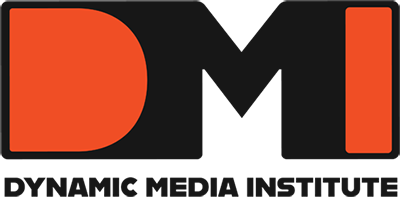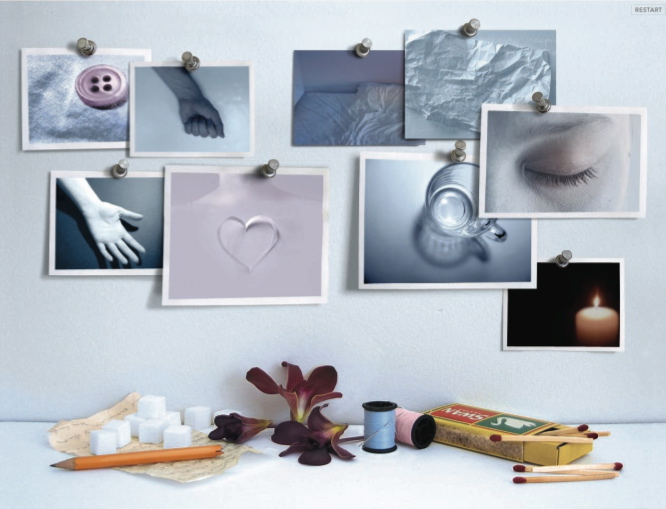Lauren Bessen, MFA ’06
project
The visual metaphor is a basic principle of effective interface design. Meaning, in a GUI, arises from the representation of a real world concept in a digital world. Familiar objects mimic their real-world analogues, yet often extend their purpose with “unreal” capabilities. This is true of the desktop GUI. Its world of folders, briefcases, address books, trashcans, and other office implements is not quite the same as its real-life version. At the same time, it is so commonplace that we barely notice it. 9 Notes is an experimental interface that examines and extends the concept of a visual metaphor as interface. Nine cool-hued pictures, attached by thumbtacks, cover a wall while a scattering of objects-matches, a spoon, sugar cubes, orchid blossoms-lines a narrow shelf. Drawing influence from classical still lifes, informal scrapbooks and the “desktop” GUI, the space is unfamiliar and ambiguous, but obviously personal.
The illusion to traditional still life is important. Sticking with the illusory, “window-like” one-point perspective, I sought to create a contemporary digital interpretation of the classical form. Scouring other contemporary revisions of still lives for unique perspectives on the genre, my preliminary design research drew upon the photographs of Wolfgang Tillmans and artist Ann Hamilton’s mantle. In my revision, I chose to formally and conceptually play with a dialectic of realism and surrealism. Object functionality both mimics the real world and creates unreal experiences. Users can drag and rearrange the note cards by pressing and moving the thumbtacks. Clicking on and dragging an object, meanwhile, creates a translucent facsimile of that object. Dragging and dropping these “copies” onto the pictures will trigger the playback of brief motion-graphics pieces inside the framed image, the static pictures becoming unreal windows onto moving content. Multiple notes can be triggered at once, and the note cards can be spatially rearranged while the videos play. Each object, however, will trigger only one specific picture, and it is up to the user to determine which goes with which. Yet, some notes are not triggered by objects at all but rather by directly clicking upon particular elements within the images themselves. Again, it is up to the user to ferret out these hidden triggers.
As an “unreal” metaphor less familiar to users, however, 9 Notes has the potential to let the interface itself create meaning. The complex relationship between representation and real-life object in this virtual environment holds potential for multiple layers of narrative. While narrative emerges from user action, 9 Notes is also a collection of mini-narratives that all touch upon themes of intimacy. Using meticulously hand-lettered, filmed typography and evocative imagery, each short video concludes with a brief poetic message. The author, subject, and recipient of these graphic odes and meditations remain hidden, and the user is unimpeded to explore and seek out the messages in each “note.”


